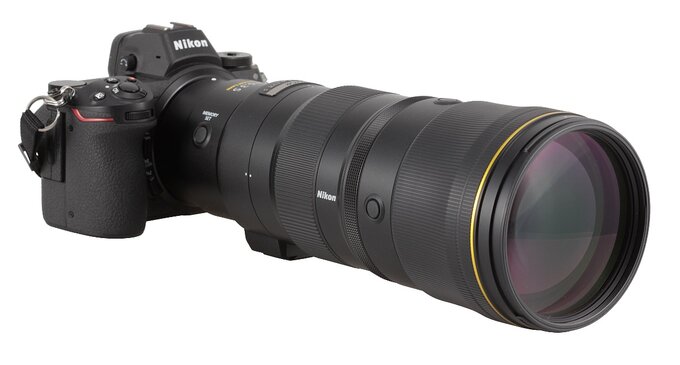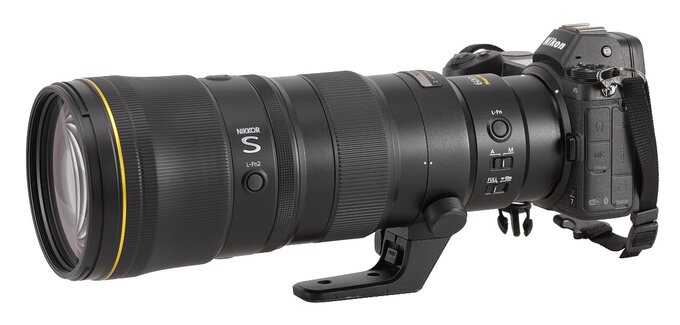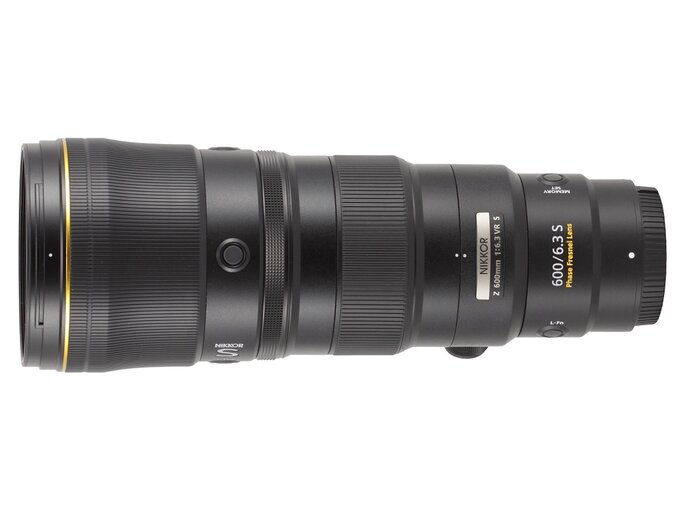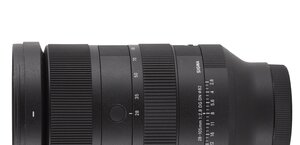Nikon Nikkor Z 600 mm f/6.3 VR S
1. Introduction
Still the technology called DO (Diffractive Optics) by Canon suffered many childhood illnesses. Unwanted light bending on diffraction elements made images less crisp and sharp than respective images from classic lenses. Additionally, the performance against bright light left a lot to be desired because the construction of diffraction ratings combined with elements didn't perform as it should. Of course DO lenses had also some important assets – notably their low weight and small physical dimensions- but their drawbacks, mentioned earlier, along with a very high price tag, a normal thing when it comes to new technologies, made them rather unpopular.
As a result, we had to wait for the next launches in that segment as long as 10 years. Finally in September 2014 Canon showed the EF 400 mm f/4 DO IS II USM. What's interesting, six months later Nikon presented the Nikkor AF-S 300 mm f/4E PF ED VR, at first glance a result of implementing a similar technology.
Please Support UsIf you enjoy our reviews and articles, and you want us to continue our work please, support our website by donating through PayPal. The funds are going to be used for paying our editorial team, renting servers, and equipping our testing studio; only that way we will be able to continue providing you interesting content for free. |
- - - - - - - - - - - - - - - - - - - - - - - - - - - - - - - - - - - - - - - - - - - - - - - -
Contrary to Canon, Nikon doesn't say anything about a new diffraction technology but about implementing a Fresnel lens (PF in the name of the lens, an abbreviation of Phase Fresnel). Such lenses are typical parts of lighthouses and continuous light studio lamps; they allow you to construct optical instruments of very small dimensions compared to their effective focal length. A diagram, shown below, points out the main asset of Fresnel lenses.

The diagram compares a Fresnel lens (on the left) with a traditional lens (on the right) of the same power. The difference between the amount of glass needed to construct either of them sticks out at once – small wonder that the new technology lenses can be a lot lighter than the traditional ones. Of course physical weigth is just one part of the issue. Thick elements inside a lens mean also problems with chromatic aberration and losses of light due to glass light absorption. Fresnel lenses allow you to avoid these issues and produce a small, lightweight lens with a long focal length and good correction of chromatic aberration.
A diagram taken from the official Nikon website shows how the duo of a Fresnel lens and an ordinary one can eliminate efficiently chromatic aberration. A focusing order for particular light colours, inverted when compared to the order of a classic element, is especially worth your attention. When you join these two parts such a process can reduce this aberration to a very small level.
 |
What's the main difference between the technology employed by Canon and Nikon? Canon doesn't use the term 'Fresnel lens' but calls their technology 'Diffractive Optics'. It is indeed in full accordance with the reality. Serrated grooves in the shape of optical elements, shown in the Canon diagrams, have dimensions of the same magnitude as the length of light. As a result you deal not with refraction but diffraction of light and Canon in their official materials never use the term 'Fresnel lens' but 'Diffractive Optics' only.
In case of Nikon you deal with a classic Fresnel. The grooves are small but visible under a microscope and they refract, not diffract, light.
In August 2018 another reflex camera Nikon lens with a PF element inside was presented, with a focal length of 500 mm and the f/5.6 aperture. We think here about the Nikkor AF-S 500 mm f/5.6E PF ED VR that passed our tests with flying colours.
 |
 |
You are also invited to get acquainted with our test procedure, described in the article "How do we test lenses?" If you feel it’s still not enough, please go to our FAQ section where you can find some further explanation.







